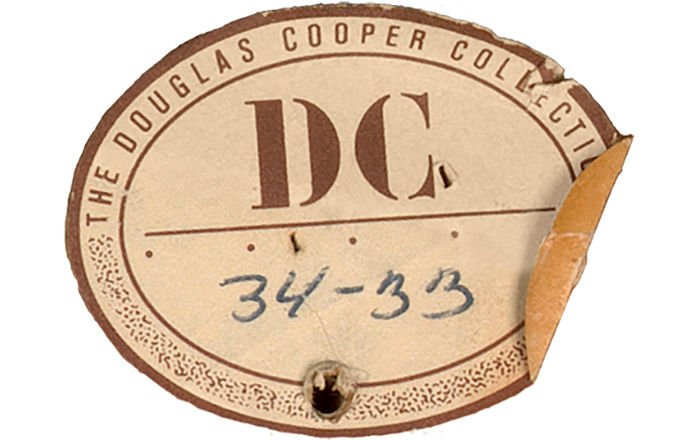
Provenance Research Resources
This portal for provenance research resources was created in 2018 to honor the twentieth anniversary of the Washington Principles on Nazi-Confiscated Art.
In June 1998 a landmark report on Nazi art looting was written by a task force convened by the Association of Art Museum Directors (AAMD) and chaired by then–Met director Philippe de Montebello. This report formed the basis of the Washington Principles, signed by forty-four governments in December 1998, as well as the "Recommended Procedures for Providing Information to the Public about Objects Transferred in Europe during the Nazi Era," drafted by the American Alliance of Museums in October 2000.
Since then, American museums have made a wealth of information publicly available by posting online the ownership histories (provenance) of the artworks in their care. This shift toward increased transparency and accessibility coincided with the rise of new technologies that made it possible to convert paper files to linked open data. Today, the provenance of countless objects is posted on the websites of American museums.
We invite you to examine the historical documents and explore the provenance research projects currently happening at The Met, across the United States, and abroad.
Method 1: Search The Met's Provenance Research Project
The Met offers a searchable database specifically for artworks in The Met's collection that were or could have been in Continental Europe between 1933 and 1945. Research is a work in progress. The database currently gives access to 3,401 works in the online collection, which has over 495,000 objects.
(You can also access this page below, in the section "Provenance Today.")
Method 2: Search the Online Collection
Provenance information is also offered for roughly 350,000 objects and artworks in the Met's online collection.
Here's how to find the provenance information for an object or artwork.
1. Click "Search" at upper right and enter keywords (e.g., artist name, title, etc.). Click "Go" to see your search results:

2. If necessary, click "Art" to focus your search results.
3. Click on the object you are interested in to view the artwork's online object page.
4. On the object page, scroll down and expand the "Provenance" panel:

Provenance Stories on Collection Insights
Provenance Today
Nazi-Era Provenance Research
The Met is committed to researching and publishing the provenance, or ownership history, of its collection.
The German/American Provenance Research Exchange Program (PREP) for Museum Professionals
A transatlantic initiative to think strategically and collaboratively about provenance research in art museums.
Selected Museum Provenance Research Projects in the US and Abroad
Provenance research projects at museums in the U.S. and Europe.
Articles on Provenance
For International Day of Provenance in 2020, the organization Arbeitskreis Provenienzforschung e.V. has published a series of articles on provenance research.
A Historic Moment in 1998
Interview with Philippe de Montebello on the Issue of Nazi-Confiscated Art
On July 14, 1998, the National Press Club invited the director of The Met to discuss the issue of works of art confiscated by the Nazis during World War II.
The 1998 Conference and Documents
Washington Conference on Holocaust-Era Assets
Hosted by the Department of State and the U.S. Holocaust Memorial Museum in Washington, DC, November 30–December 3, 1998
US Department of State Washington Conference Principles on Nazi-Confiscated Art
Released in connection with the Washington Conference on Holocaust Era Assets, Washington, DC, December 3, 1998
AAM Recommended Procedures
Recommended procedures for providing information to the public about objects transferred in Europe during the Nazi era
Museums and Artwork in WW II
Monuments Men and Artworks in World War II
Learn about the Monuments Men and Women who saved works of art during World War II—including the former director of The Met, James J. Rorimer.










